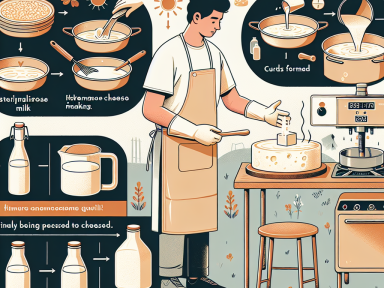Why Making Your Own Cheese is a Necessary Survival Skill
In these challenging times, acquiring self-reliance skills is not just some old-timey fancy; it’s a ticking necessity. Picture this, you are stranded in a disaster, or supplies from the store have been cut, and your larder is running desperately low. One skill that might really make a difference is the ability to produce your own cheese. It’s a compact, nutrition-dense food source that can be stored for long periods.
The Process of Making Cheese
The wonder of cheesemaking is that from few simple ingredients – milk and a few kitchen staples – you can produce an unspeakably delicious food. So, let’s delve into the intricacies of turning raw milk into cheese.
Step One: Sterilize Your Equipment
Begin by sterilizing your cheese making equipment. This process is crucial to maintain food safety and ensure the desired form and taste of the cheese.
Step Two: Heat the Milk
Heat your milk to the appropriate temperature. Keep in mind, the type of cheese you’re making will determine how hot your milk should be. Typically, farmers cheese or simple paneer necessitates a temperature of around 185 degrees Fahrenheit.
Step Three: Adding Acid
Now it’s time to add the acid. Depending on the outcome you desire, you can use either vinegar, lemon juice or a specific cheese culture. The acid, when added to the heated milk, facilitates curdling.
Step Four: Cut, Cook and Drain the Curd
Following the formation of curds, they are cut or broken up, then cooked and drained to release the whey. This is a critical step as it determines the final texture of your cheese.
Step Five: Pressing and Aging
Finally, the curd is placed in a cheese mold, pressed to remove any remaining whey, and then left to age. Some cheeses are ready to eat immediately after pressing while others are carefully aged to enhance their flavor.
Investing in Your Survival
All these steps might sound straightforward, but remember, practice makes perfect. For beginners, start with easier cheeses like ricotta or mozzarella and gradually work up to more complex variations like swiss or cheddar.
Consider homemade cheese making not as a daunting task, but an empowering survival skill. Having ample provisions might keep you safe for weeks, but possessing knowledge to create your own food sources is what real survival is about. Arm yourself with the invaluable skill of cheese making, and be truly prepared for whatever lies ahead.




GIPHY App Key not set. Please check settings